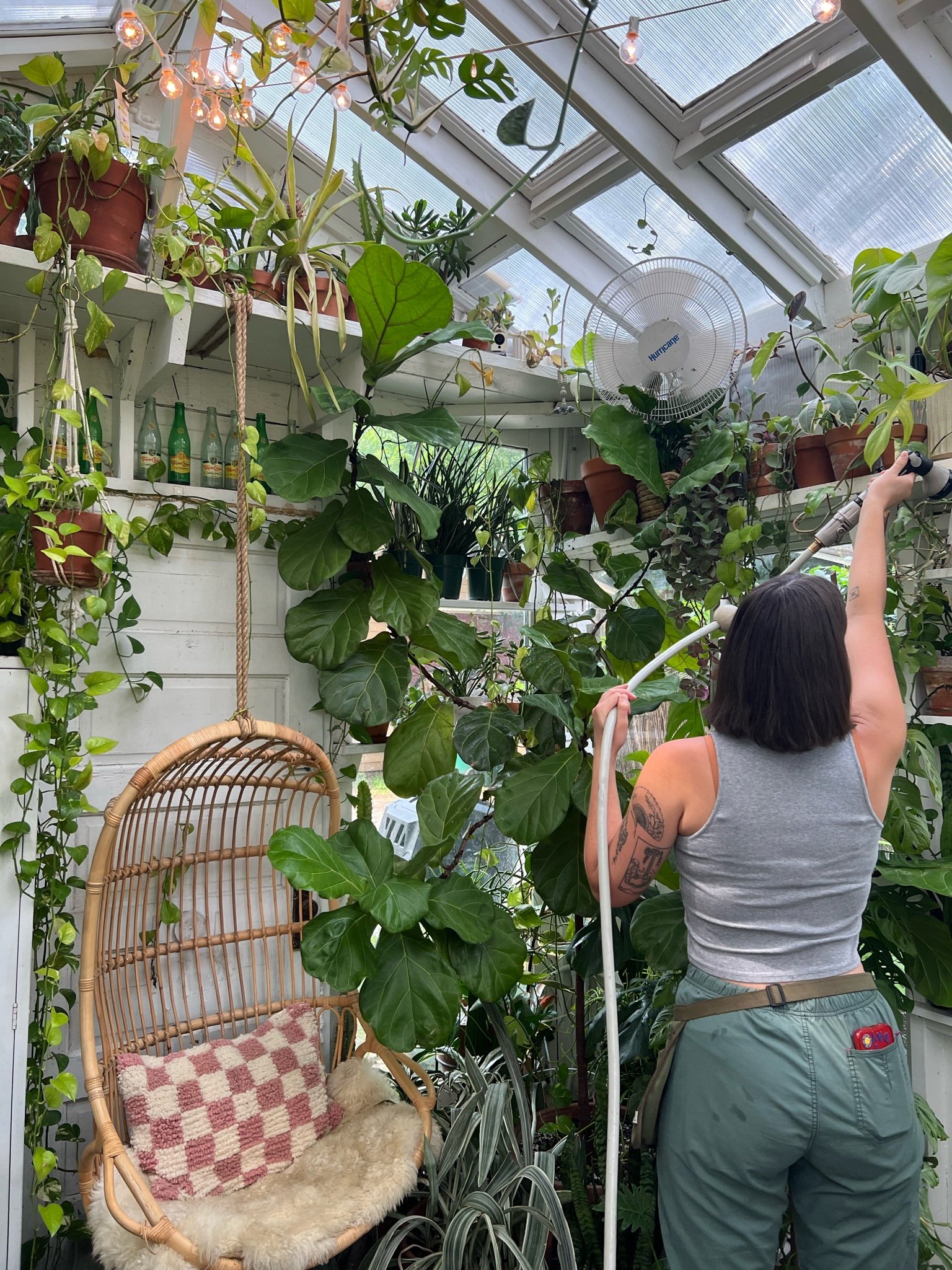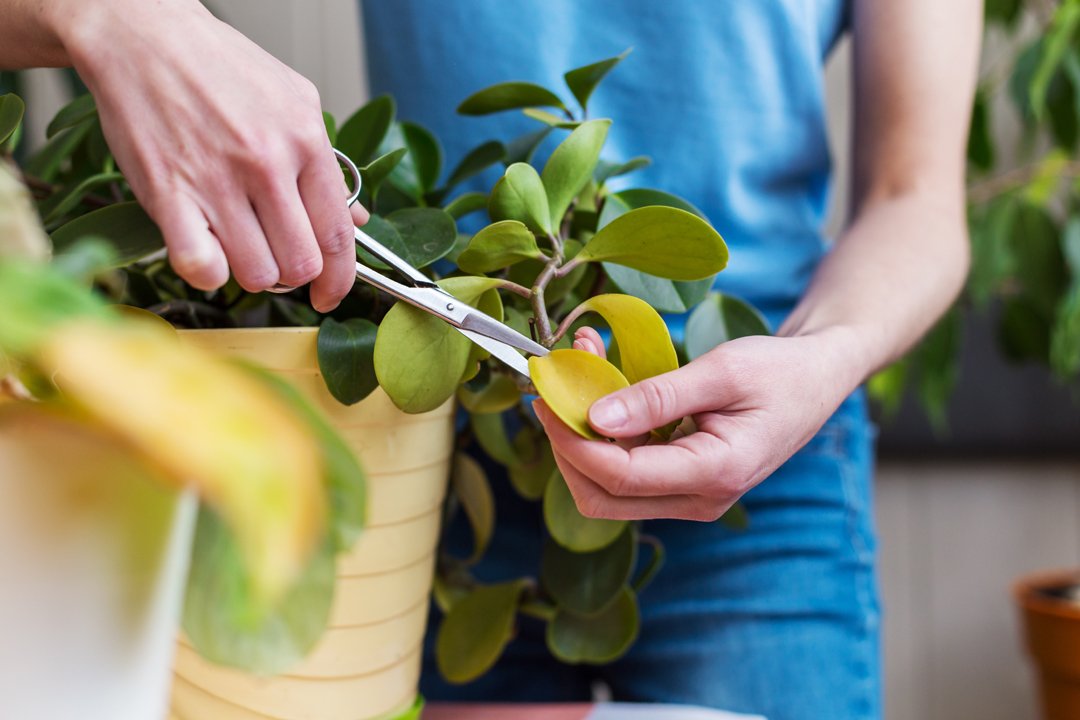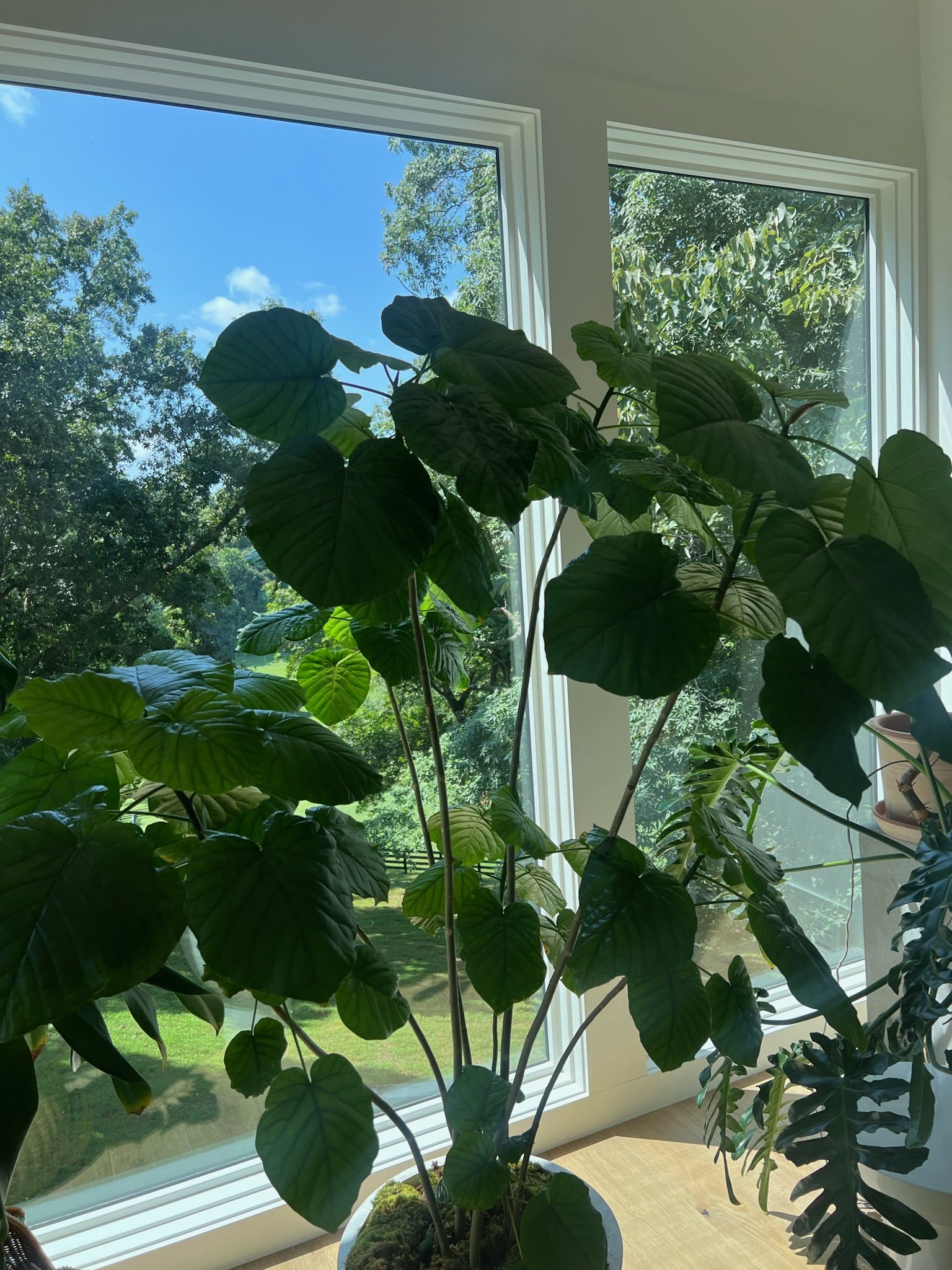House Plant Care Advice from Interiorscapers
The goal of every houseplant owner is to, of course, keep your plants happy, healthy, and thriving. For the most part, that can be achieved by good watering techniques, proper sunlight, and fertilizing. But there’s more that goes into plant care and the sustained health of your plants than you may think!
Here are some tips we use as interiorscapers, or interior plant designers, that keep our plants not only looking their best, but feeling it too!
Pruning
Don’t be afraid to snip those old, yellowing or browning leaves. An expired leaf here and there usually isn’t cause for concern– but if yellowing/browning leaves become a persistent issue with your plant, be sure to take a closer look, as it could mean pests, watering, or light issues.
The majority of nutrients travel through plants from the oldest leaves to the newest, active growth resulting in lower (older) leaves to expire. As that nutrients leave the lower leaves, it can cause them to expend more energy than it’s worth to keep them, so it’s best to make a clean cut and allow the plant to focus on the growth!
Outside of general maintenance pruning, it’s beneficial to prune areas of the plant with a dense concentration of leaves. Doing so creates sufficient airflow and ventilation, which is a key step in pest and disease prevention! When we’re gearing up for a good pruning session, we look at the plant against a window and prune areas of the plant that aren’t letting any light shine through.
Practicing regular pruning not only keeps your plant looking top notch, but is beneficial to the overall health of the plant!
Quick Tip!
If you begin to notice browning/yellowing tips on plants like Dracena and Peace Lilies, it could be fluoride sensitivity! To remedy this, you can either water your plants with distilled or rain water or add garden lime to the soil. This will help balance the soil’s PH! From there you can simply prune those old tips to the edge of the brown.
Dusting and Washing Leaves
Much like any surface in your home, plants accumulate dust and debris over time. But did you know this isn’t just a cosmetic issue? Plants take in carbon dioxide through microscopic pores in the leaves and stems called stomata, a critical step in the photosynthesis process. If the stomata are blocked by dust, that hinders the plant’s ability to photosynthesize, or create energy. In other words, it’s bad news for your precious plants.
We tend to dust our plants monthly or as needed. Simply spray the plant down with your chosen leaf wash then wipe the excess away with a microfiber towel.
Topping of Soil
When a plant begins to struggle and the plant parent isn’t sure why, they often think the solution is to repot. This isn’t always the answer because some plants prefer to be a bit snug in their pot, or even rootbound. As long as the soil hasn’t compacted or become hard, simply topping off the soil may hold your plant over until the next spring repot! Soil and substrate provide essential nutrients for your plant, but as the plant takes it up, those nutrients deplete. Some plants tend to even be ‘soil eaters,’ you may find that the soil in your snake plants and money trees seem to be low. Adding a few extra inches of topsoil can keep your root system covered and introduce more essential nutrients to your plant!
Rotating Your Plant
To encourage even growth on every side of the plant, we recommend rotating the plant a few inches every month! This allows each side of the plant to receive a good amount of light and for equal growth around the entire plant. Plants grow towards the sunlight, so overtime, if they’re just sitting in the same position, they may start to tilt or become bare on sides that aren’t getting as much sunlight.
All of these tips are great regular care rituals that truly set your plant up for success in the long term! We offer all of these services and more in our maintenance program. If you’d like to learn more about the interiorscaping services we offer, please reach out!
Until Then, Happy Planting!
Kelly









